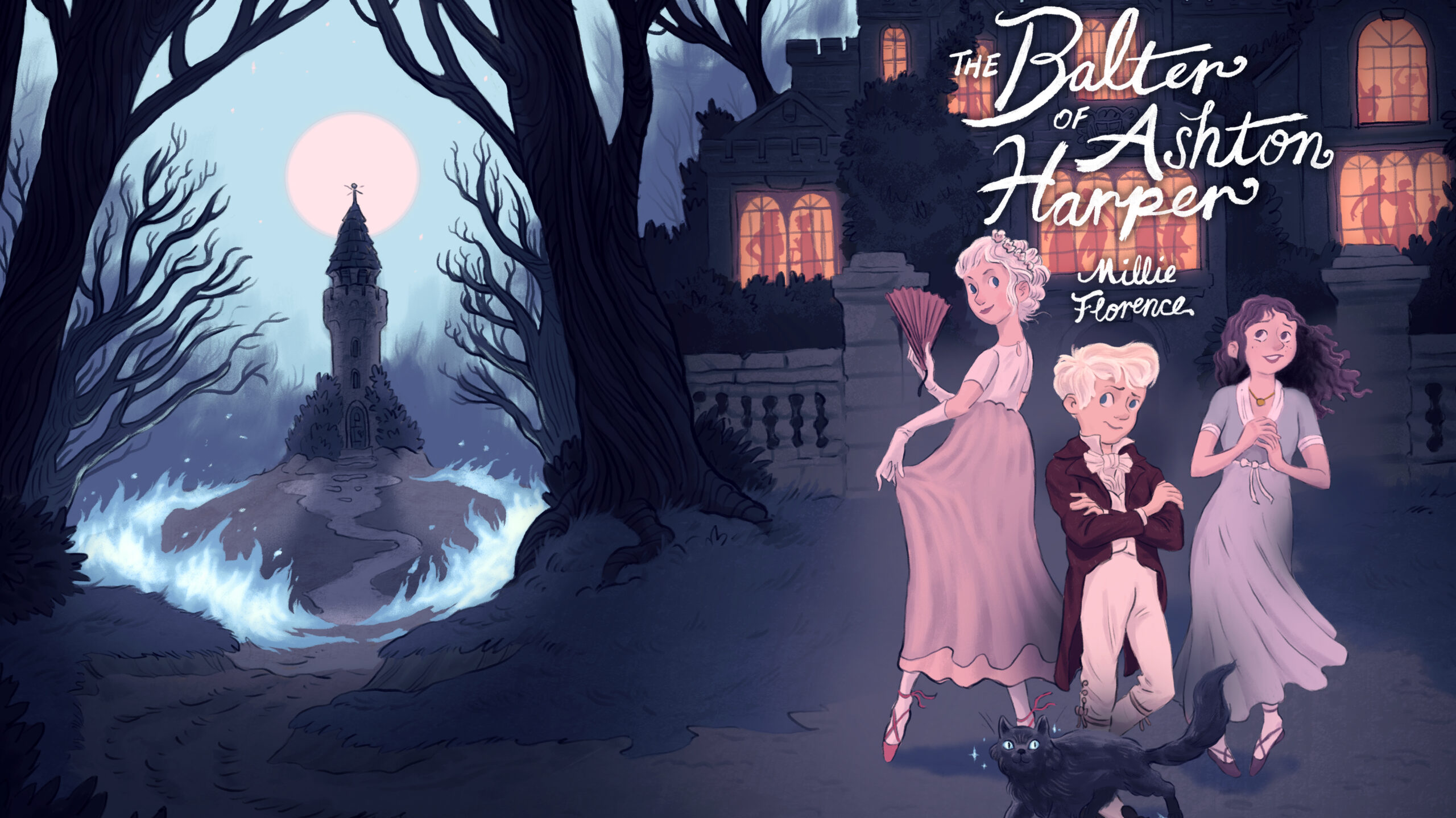When I started reading The Balter of Ashton Harper, it struck me at first blush as a fun and fanciful Middle Grade imitation of a Jane Austen novel of manners. For the first few chapters, I assumed the plot would only be about the main character, Ashton Harper, and his angst-ridden drive toward perfection in his dancing. And of course, that alone would make a fine and fun novel. But as I continued on in the narrative journey I discovered that the book widens and deepens like a meandering river.
In pursuit of their dreams of success, Ashton and his two siblings wander into Brontësque ruins. Magic lies within these ruins and in the surrounding “forests ancient as the hills, enfolding sunny spots of greenery,” (to borrow a line from Coleridge’s Kubla Khan), so for a few chapters further, I assumed that this was what the book was really about: a magic glide through a Middle Grade plot. But I was wrong again. In this book, just like in Coleridge’s Kubla Khan, the magic—the enchantment—is the shiny wrapping paper used to enfold the true gift beneath.
The Balter of Ashton Harper instinctively understands what the storytellers of early Pixar movies once understood: a story can speak to kids and adults at the same time, but in different ways.
The book will likely mean two different things to a young reader and an adult reading it aloud to them. As I read it aloud to my son, he connected to the mystery and adventure and the ways that brothers and sisters can so deeply wound and heal each other. It is rare that a book so accurately captures the fraught love between older and younger siblings; a love so raw that it must be couched in rivalry, sarcasm, snipes, and jokes. I know that’s how my siblings and I related, and even decades later, I still felt keen memories of behaving with my siblings the exact same way the three Harper siblings do. All three siblings squabble, ignore, fret, support, and define each other. I’m sure any other adult reading this book will resonate with their own memories of relating with their own siblings, but as adults they will also be able to catch the deeper themes that rest just below the plot.
As mentioned earlier, the main character, Ashton Harper, cannot relax as he dances, and while younger readers will likely relate to anxieties about the pressures of performance, they might miss Millie Florence’s deeper comments about art. Through dance, this novel explores why artists make art, how our identity can accidently become trammeled up in our dreams, how central our relationships are to our courage, and how central our courage is in the choice to pursue dreams. And every adult, whether they’re in a creative field or not, will relate to the book’s reflections on success.
What does success look like, really?
What does it cost?
What does it provide us?
Why do we fixate so much on it?
Beneath all the fun wrapping paper of mystery, magic, allusions to Austen, notes of Brontë, Shelley, Coleridge, and the loving rivalry of three siblings, The Balter of Ashton Harper is really an invitation for every reader to slow down for a moment and wander a bit deeper inside their soul.
Why do we make the choices we make? How might we overlook the relationships that are most central to us? The book asks, “Do you love making art, or do you love having made art? There’s a difference. You’ve got to love the dance itself, not where the dance will take you.”
That’s just one of the lightly-trodden paths that the book nudges the reader to explore for themselves. It also nudges the reader to visit several other places in the soul that perhaps we haven’t visited in quite a while. Because of the fun characters, the magic, and the mystery, I found myself meandering down each path prayerfully.
According to the noted Christian author and counselor, Dan Allender, “you can’t take anyone else deeper than you’ve gone yourself.”
So, for parents especially, many of the paths in this book are important ones, because someday soon we will want to accompany our kids as they begin their own internal pilgrimages. Millie Florence’s The Balter of Ashton Harper simply makes these journeys a little more fun, mysterious, and exciting.
- Review: The Balter of Ashton Harper - November 8, 2023

Leave a Reply